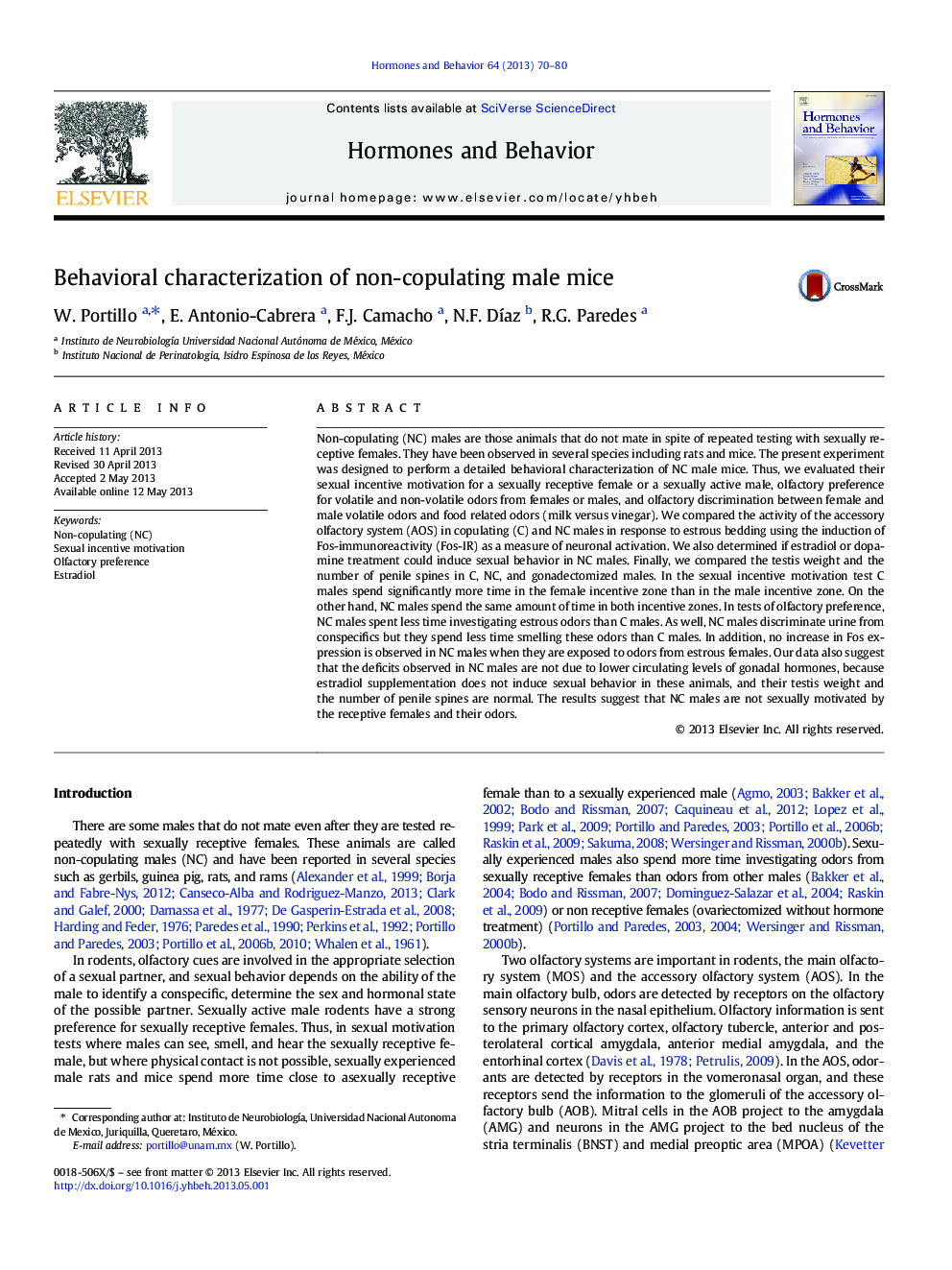| کد مقاله | کد نشریه | سال انتشار | مقاله انگلیسی | نسخه تمام متن |
|---|---|---|---|---|
| 323614 | 540724 | 2013 | 11 صفحه PDF | دانلود رایگان |

• NC males are not sexually motivated by receptive females or their odors.
• The ability of NC males to discriminate odors is deficient.
• NC males show a reduced Fos-IR in brain regions involved in olfactory processing.
• NC male's testis weight and the number of penile spines are normal.
• The deficits observed in NC males are not due to lower circulating levels of estradiol.
Non-copulating (NC) males are those animals that do not mate in spite of repeated testing with sexually receptive females. They have been observed in several species including rats and mice. The present experiment was designed to perform a detailed behavioral characterization of NC male mice. Thus, we evaluated their sexual incentive motivation for a sexually receptive female or a sexually active male, olfactory preference for volatile and non-volatile odors from females or males, and olfactory discrimination between female and male volatile odors and food related odors (milk versus vinegar). We compared the activity of the accessory olfactory system (AOS) in copulating (C) and NC males in response to estrous bedding using the induction of Fos-immunoreactivity (Fos-IR) as a measure of neuronal activation. We also determined if estradiol or dopamine treatment could induce sexual behavior in NC males. Finally, we compared the testis weight and the number of penile spines in C, NC, and gonadectomized males. In the sexual incentive motivation test C males spend significantly more time in the female incentive zone than in the male incentive zone. On the other hand, NC males spend the same amount of time in both incentive zones. In tests of olfactory preference, NC males spent less time investigating estrous odors than C males. As well, NC males discriminate urine from conspecifics but they spend less time smelling these odors than C males. In addition, no increase in Fos expression is observed in NC males when they are exposed to odors from estrous females. Our data also suggest that the deficits observed in NC males are not due to lower circulating levels of gonadal hormones, because estradiol supplementation does not induce sexual behavior in these animals, and their testis weight and the number of penile spines are normal. The results suggest that NC males are not sexually motivated by the receptive females and their odors.
Journal: Hormones and Behavior - Volume 64, Issue 1, June 2013, Pages 70–80